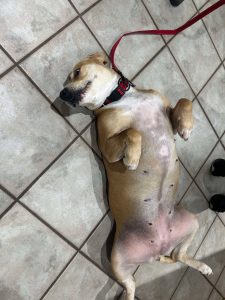 Whether your pet is wagging their tail or curling up in your arms, our goal is to create a visit that feels safe, supportive, and as stress-free as possible. Here’s how we use the FAS scale and our Fear Free approach to make our hospital a friendlier place—one tail wag or purr at a time.
Whether your pet is wagging their tail or curling up in your arms, our goal is to create a visit that feels safe, supportive, and as stress-free as possible. Here’s how we use the FAS scale and our Fear Free approach to make our hospital a friendlier place—one tail wag or purr at a time.
How We Evaluate FAS in Cats
Cats are clever masters of hiding discomfort, which makes careful evaluation essential. During your cat’s visit, we observe:
- What does their body say? Are they crouching or tense? Are they trying to hide?
- What are they actually saying? Are they meowing or growling? Or are they silent when they’d normally be vocal?
- What are they doing? Are they panting, hissing, avoiding eye contact, or showing aggression?
Our team is trained to pick up on even the smallest signs of stress so we can adapt our handling techniques, use pheromone-infused towels, give treats, introduce a fun toy, or give your kitty extra time to settle. Everything we do is designed to help your feline friend feel safe and secure.
How We Evaluate FAS in Dogs
Dogs are typically more of an open book than cats, but it’s still important to evaluate FAS severity and triggers.
- What’s the body language? Are they relaxed, stiff, or cowering?
- What’s their facial expression? Are their ears pinned back with eyes wide?
- What are they actually saying? Are they whining, barking, or growling?
- How do they respond to touch? Do they flinch, resist, or try to escape?
By watching and making a record of these behaviors, we can tailor our approach—using treats, low-stress handling, and calming techniques to ensure your dog feels comfortable and safe.
Why It All Matters. Being able to read and respond to FAS levels help us to improve every visit —both emotionally and medically. A relaxed pet is easier to assess, treat, and comfort, and that means better care outcomes as well as a better overall experience. Whether your pet shows their happiness with a wagging tail or a calm purr, we want every pet that visits us to feel seen, heard, and safe.
Want to know more about what the FAS scale is and why we use it? Click here to read our article Nothing to Fear Here.




